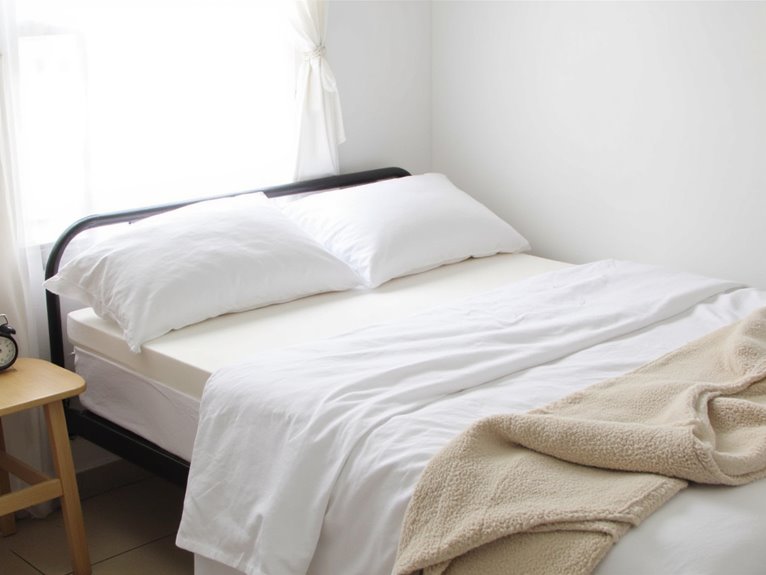Why Is Granite Expensive?
Granite's luxurious appeal and hefty price tag are attributed to a combination of factors. The costly extraction process, labor-intensive processing and refining, and rarity of high-quality deposits drive up costs. Skilled labor and installation requirements add to the expense, while high demand and luxury appeal further solidify its premium price. Rigorous quality control measures and certification processes guarantee a high-quality product, but at a cost. Finally, transportation and logistics costs due to the remote location of quarries and processing facilities contribute to the expense. The complexity of these factors is multifaceted, and the story behind granite's cost is only just beginning.
We are supported by our audience. When you purchase through links on our site, we may earn an affiliate commission, at no extra cost for you. Learn more. Last update on 27th December 2025 / Images from Amazon Product Advertising API.
Quarrying and Extraction Costs
Extracting granite from quarries is a costly endeavor, with the average cost of extracting one ton of granite ranging from $100 to $300, depending on the location and quality of the deposit.
This cost is largely driven by the complexity of the extraction process, which involves drilling, blasting, and transporting the granite from the quarry site.
Additionally, quarrying granite often requires significant investment in equipment, labor, and infrastructure, further increasing costs.
The remote location of many granite quarries also adds to the expense, as companies must transport personnel, equipment, and materials to these sites.
These factors contribute to the high cost of extracting granite, which is ultimately reflected in the final price of the material.
Processing and Refining Expenses
Transforming raw granite into a polished, precision-cut product necessitates a multifaceted processing and refining process that incurs substantial expenses.
This process involves several stages, including cutting, grinding, and polishing, which require specialized machinery and skilled labor.
The processing stage involves cutting the raw granite into slabs, which are then refined through a series of grinding and polishing stages to achieve the desired level of shine and finish.
These processes are labor-intensive and require significant investments in equipment and training, contributing to the overall cost of granite.
Additionally, the processing and refining stages also involve quality control measures, further adding to the expenses.
Rarity and Limited Supply
The geological rarity of high-quality granite, coupled with the limited supply of suitable quarries, drives up the cost of this luxury material.
Granite is a naturally occurring stone, and its formation process takes millions of years, making it a scarce resource.
The availability of high-quality granite deposits is limited, and extracting it from quarries is a complex and costly process.
In addition, many quarries are located in remote areas, increasing transportation costs.
The scarcity of high-quality granite, combined with the limited number of quarries, contributes to its high price.
Furthermore, the rarity and limited supply are key factors in the high cost of granite, making it a luxury material for those who can afford it.
Skilled Labor and Installation
Beyond the cost of the material itself, the labor-intensive process of installing granite also substantially contributes to its high price tag.
Granite installation requires skilled laborers with extensive experience in handling and placing the heavy, dense stone. The process involves precise measurement, cutting, and fitting of the slabs, which demands a high level of craftsmanship.
Additionally, specialized equipment and tools are necessary to handle the weight and density of granite. The labor cost is further increased by the need for multiple workers to handle and maneuver the slabs into place.
As a result, the cost of skilled labor and installation notably adds to the overall expense of granite.
High Demand and Luxury Appeal
Granite's luxury appeal and widespread popularity, fueled by its unique aesthetic and durability, contribute substantially to its expensive reputation, as high demand from discerning homeowners and designers drives up the cost of this premium material.
The exclusivity and prestige associated with granite countertops and surfaces have created a sense of luxury, making it a sought-after material for high-end residential and commercial projects.
As a result, suppliers and manufacturers can command a premium price for this coveted material, which is reflected in the final cost to consumers.
The demand for granite continues to surge, further solidifying its position as a luxury material with a corresponding price tag.
Quality Control and Certification
Manufacturers and suppliers implement rigorous quality control measures to guarantee that granite meets stringent standards, as certification from reputable organizations like the Marble Institute of America further validates the material's authenticity and quality.
This certifies that granite slabs or tiles meet specific criteria for color, pattern, and durability.
The certification process involves a series of tests, including density, hardness, and porosity assessments.
This attention to detail and commitment to quality result in a premium product that justifies the higher cost.
Transportation and Logistics Costs
The considerable distance between granite quarries and processing facilities, coupled with the heavy and bulky nature of the stone, drives up transportation and logistics costs, substantially contributing to the final price of the material.
The cost of fuel, maintenance, and labor for specialized vehicles and equipment adds to the expense.
Additionally, the need for careful handling and storage to prevent damage during transportation increases the logistical complexity and cost.
These costs are inevitably passed on to the consumer, making granite a more expensive option.
As a result, the transportation and logistics costs have a significant impact on the final price of granite, making it a key factor in its expensiveness.

